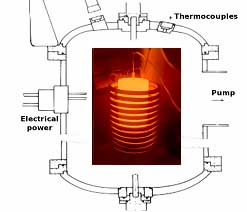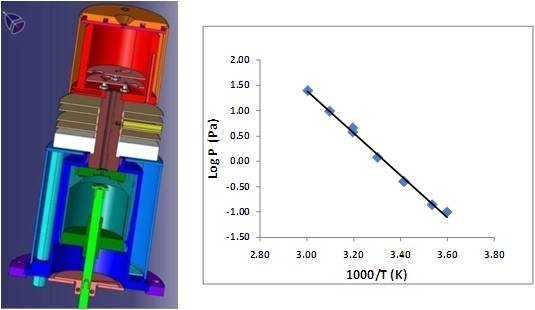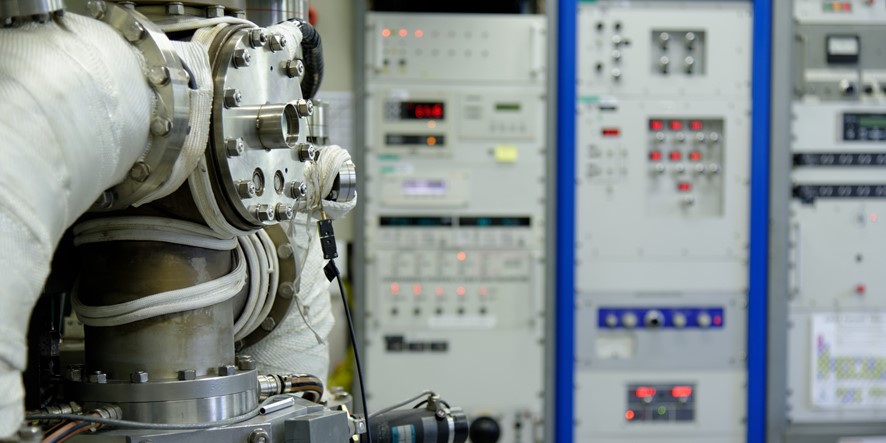Thermodynamics studies require a number of specific facilities for optimising complex chemical systems (data banking).
These facilities, which are developed or used in the TOP group, include:
Modelling
Experimental techniques
- Dissolution calorimetry to evaluate the enthalpy of formation of Ce(Cu,Ni)5 solid solution and of AlLiSi ternary compound,
- The original technique of low-frequency electromagnetic settling under isothermal conditions, differential thermal analysis used to determine solid-liquid phase balances of the Al-rich side of the Al-Si-Zr system and of the Fe-rich side of Fe-Ti-B and Fe-C-W systems,

The electromagnetic phase separation (EPS) technique constitutes a powerful and viable technique to establish phase relationships in the solid/liquid range of a large variety of metallic systems, by maintaining long time annealing at high temperature, and thus to achieve the constitution of solid and liquid phases in equilibrium at selected temperatures and compositions (Medium frequency induction furnace (10 kHz) under He atmosphere (Contact A. Antoni-Zdziobek)
- High-Temperature Mass Spectrometry (HTMS) used for studying nuclear materials: examples include a study of the gas phase of the Cs-I-O-H system to explain the behaviour of iodine in the event of a serious nuclear accident and thermodynamic determination for Th/Zr-based molten salts for fourth-generation reactors, or again an evaluation of the thermodynamic behaviour of the vaporisation of organometallic (OM) precursors used in CVD and ALD processes, including determination of the composition of the gas phase and any decomposition processes involved.

Organometallic reactor for Knudsen cell type mass spectrometer and vapor pressure of TEMAZ. The thermal cracking of the gaseous precursor as pentakis dimethylamino tantalum (PDMAT), tetrakis (ethylmethylamino)zirconium (TEMAZ), new in the ALD/CVD TaN deposition processes, has been studied in the temperature range from 343 to 723K and 278-333 K, respectively. To study these two precursors a specific reactor coupled with our Knudsen cell type mass spectrometer has been built in the laboratory. The reactor could work either as a conventional Knudsen evaporation cell - where the organometallic sample is evaporated using the only lower (or first) Knudsen cell and the mass spectrometric analysis is thus performed on saturated vapors - or like tandem cells (the evaporation cell linked to the cracking cell) in order to analyze the non-saturated gas phase issued from the thermal decomposition. The first effusion cell reproduces conditions existing in the bubbler of an ALD system and the cracking cell that of the transport lines and the ALD oven.
(Contact I. Nuta)



